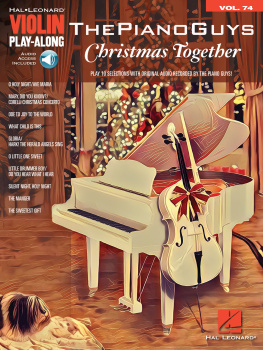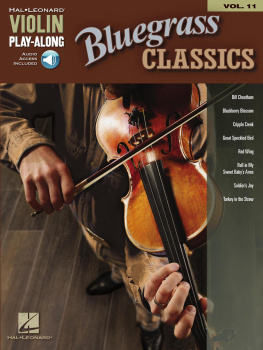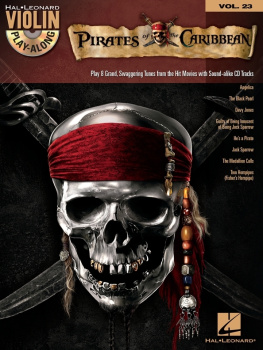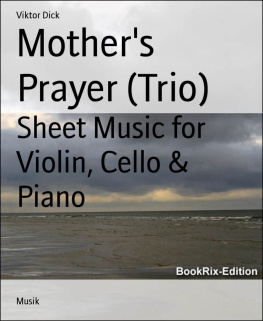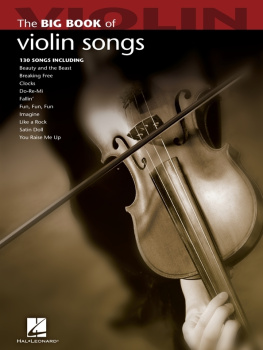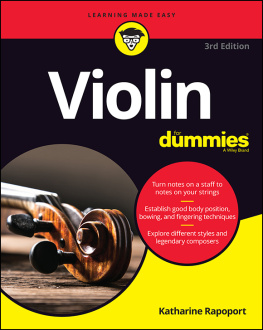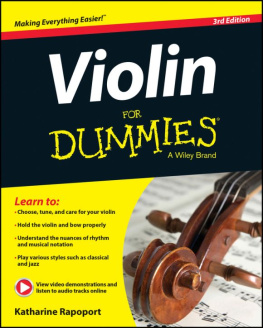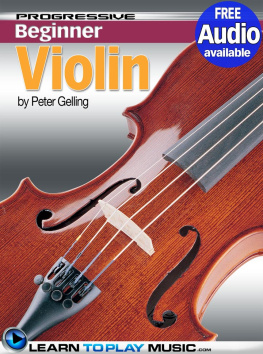Music Studio - Violin for Beginners: Simple and Effective Strategies of Reading Music and Playing Melodious Violin Songs
Here you can read online Music Studio - Violin for Beginners: Simple and Effective Strategies of Reading Music and Playing Melodious Violin Songs full text of the book (entire story) in english for free. Download pdf and epub, get meaning, cover and reviews about this ebook. year: 2020, genre: Children. Description of the work, (preface) as well as reviews are available. Best literature library LitArk.com created for fans of good reading and offers a wide selection of genres:
Romance novel
Science fiction
Adventure
Detective
Science
History
Home and family
Prose
Art
Politics
Computer
Non-fiction
Religion
Business
Children
Humor
Choose a favorite category and find really read worthwhile books. Enjoy immersion in the world of imagination, feel the emotions of the characters or learn something new for yourself, make an fascinating discovery.

- Book:Violin for Beginners: Simple and Effective Strategies of Reading Music and Playing Melodious Violin Songs
- Author:
- Genre:
- Year:2020
- Rating:5 / 5
- Favourites:Add to favourites
- Your mark:
- 100
- 1
- 2
- 3
- 4
- 5
Violin for Beginners: Simple and Effective Strategies of Reading Music and Playing Melodious Violin Songs: summary, description and annotation
We offer to read an annotation, description, summary or preface (depends on what the author of the book "Violin for Beginners: Simple and Effective Strategies of Reading Music and Playing Melodious Violin Songs" wrote himself). If you haven't found the necessary information about the book — write in the comments, we will try to find it.
Music Studio: author's other books
Who wrote Violin for Beginners: Simple and Effective Strategies of Reading Music and Playing Melodious Violin Songs? Find out the surname, the name of the author of the book and a list of all author's works by series.
Violin for Beginners: Simple and Effective Strategies of Reading Music and Playing Melodious Violin Songs — read online for free the complete book (whole text) full work
Below is the text of the book, divided by pages. System saving the place of the last page read, allows you to conveniently read the book "Violin for Beginners: Simple and Effective Strategies of Reading Music and Playing Melodious Violin Songs" online for free, without having to search again every time where you left off. Put a bookmark, and you can go to the page where you finished reading at any time.
Font size:
Interval:
Bookmark:
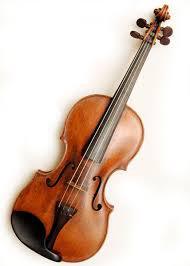 First things first you are going to need a violin! To be more specific, and in your best interest as a beginning player, you are going to need a quality instrument that will enable you to get a great sound as a beginner. Beginning violinists must have positive feedback from their initial encounters with the instrument, or they will become discouraged quite quickly or jump to the conclusion that they were not meant to be a successful player. It can be challenging to know who to trust and where to turn for references for well made, beginner, budget-friendly violins, especially because investing in an instrument can be an unfamiliar path. There may be violin kits that come with all of the accessories for what may seem like a bargain, but some of these instruments are not well set up. That is if they are even set up for you at all you might have to learn how to carve your violin bridge with some of the instruments I've seen purchased by hopeful, inexperienced new players.
First things first you are going to need a violin! To be more specific, and in your best interest as a beginning player, you are going to need a quality instrument that will enable you to get a great sound as a beginner. Beginning violinists must have positive feedback from their initial encounters with the instrument, or they will become discouraged quite quickly or jump to the conclusion that they were not meant to be a successful player. It can be challenging to know who to trust and where to turn for references for well made, beginner, budget-friendly violins, especially because investing in an instrument can be an unfamiliar path. There may be violin kits that come with all of the accessories for what may seem like a bargain, but some of these instruments are not well set up. That is if they are even set up for you at all you might have to learn how to carve your violin bridge with some of the instruments I've seen purchased by hopeful, inexperienced new players.Font size:
Interval:
Bookmark:
Similar books «Violin for Beginners: Simple and Effective Strategies of Reading Music and Playing Melodious Violin Songs»
Look at similar books to Violin for Beginners: Simple and Effective Strategies of Reading Music and Playing Melodious Violin Songs. We have selected literature similar in name and meaning in the hope of providing readers with more options to find new, interesting, not yet read works.
Discussion, reviews of the book Violin for Beginners: Simple and Effective Strategies of Reading Music and Playing Melodious Violin Songs and just readers' own opinions. Leave your comments, write what you think about the work, its meaning or the main characters. Specify what exactly you liked and what you didn't like, and why you think so.


